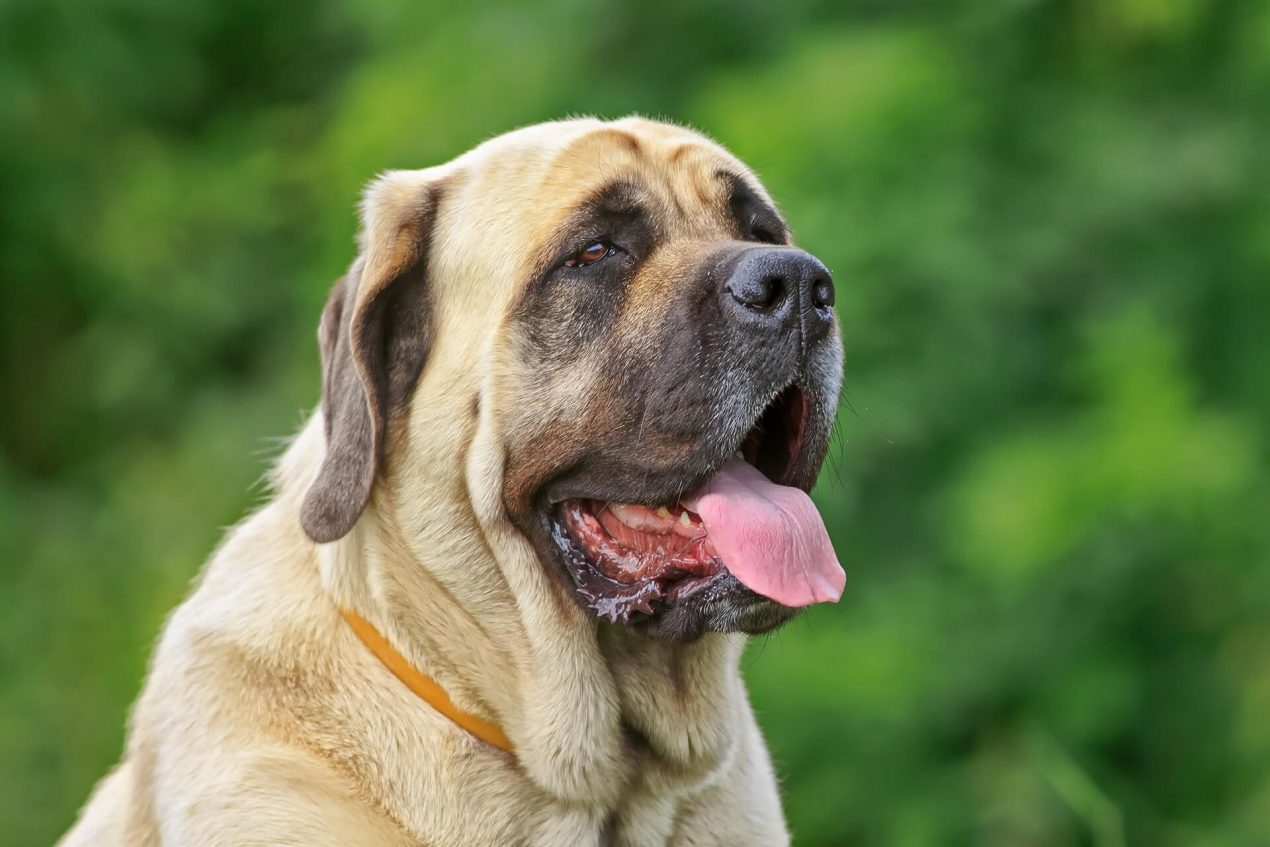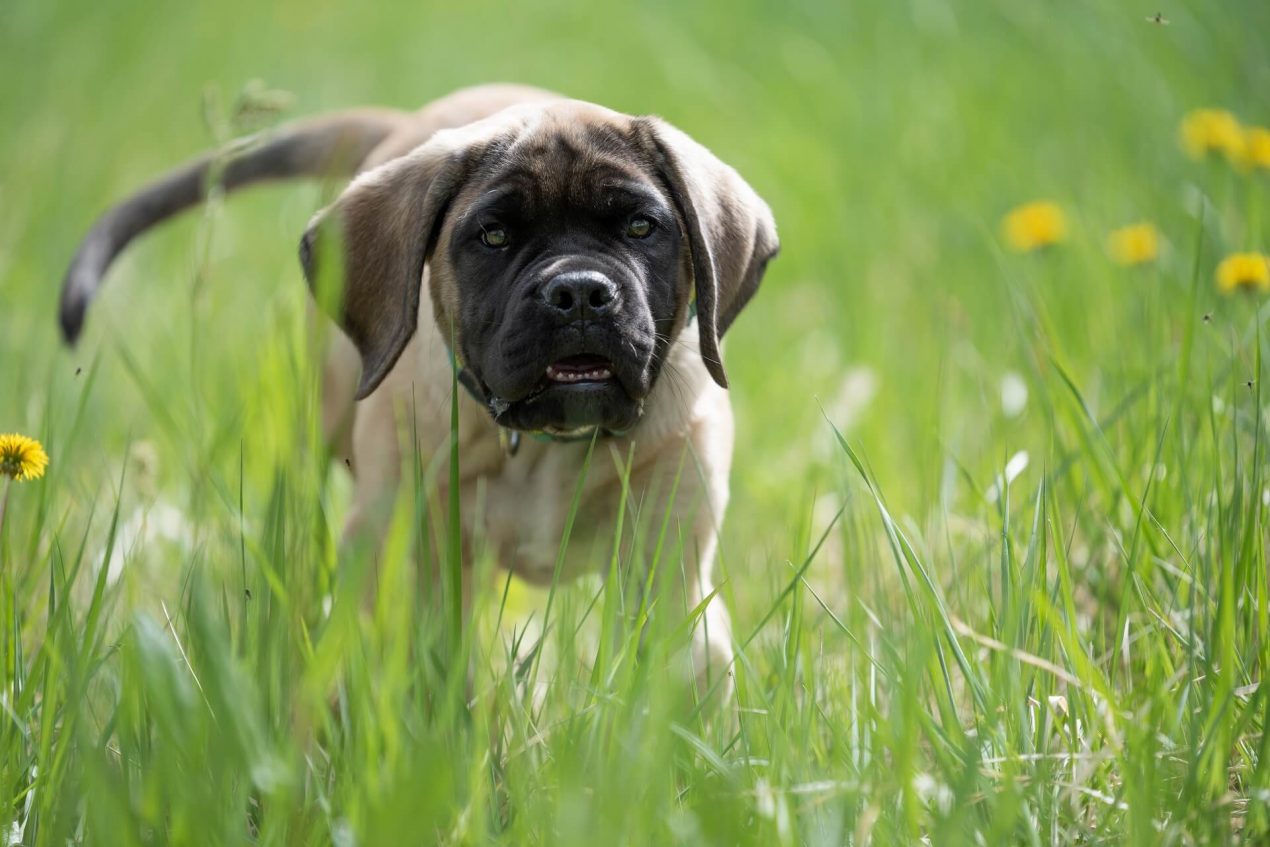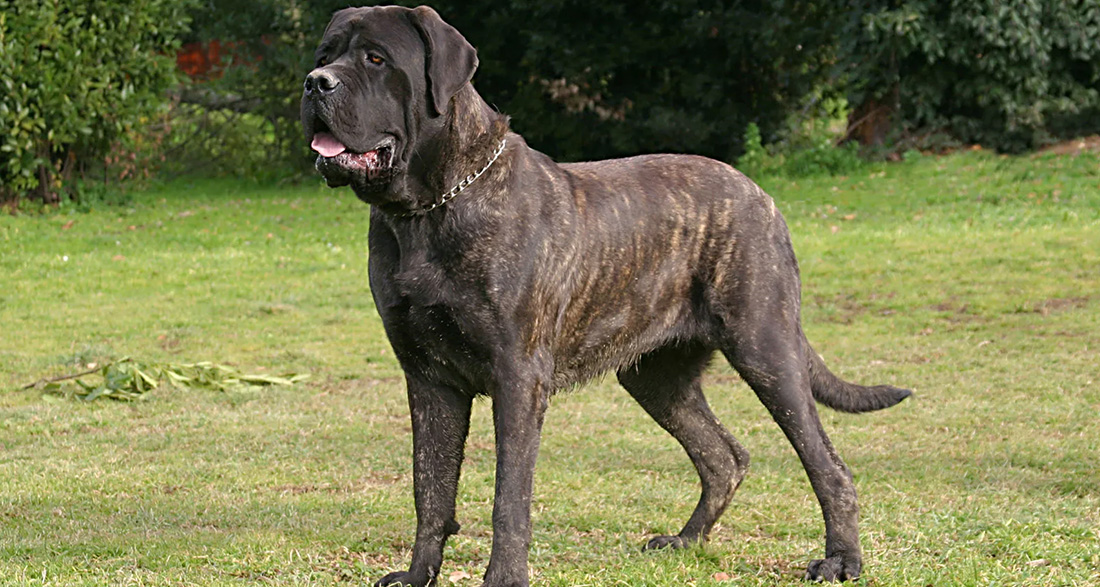At first glance, the massive Mastiff may seem intimidating, causing many to cross the street when one of these impressive dogs approaches. However, they misunderstand the imposing dog. While he may be one of the largest dogs, gentleness and patience characterize him. He is so empathetic that he is increasingly being used as a therapy dog.
History of the Mastiff
Mastiffs are considered one of the oldest dog breeds in the world. Large, muscular dogs that accompanied their humans on hunts or in wars were depicted on reliefs from ancient Babylon, more than 2,000 years before Christ. In the Roman Empire, Molossers, as the ancestors of the Mastiffs were called, were used as war and hunting dogs. Additionally, it is documented that the dogs fought in arenas and guarded their owners’ homes and properties.
Molossers were known and used throughout the Roman Empire and beyond due to trade relations. Presumably, the ancestors of the Mastiffs arrived in Britain through this route. In a treatise by the Duke of York, Edmund of Langley, the Mastiff was mentioned by name for the first time in the 14th century. At that time, they were used both as hunting dogs and guard dogs. There are also reports of them being used as war dogs. As hunting dogs of the nobility, they even took on bears and wild boars.
A sad chapter is that even in the Middle Ages and into modern times, the large, powerful dogs had to fight in arenas as fighting dogs against bears, bulls, lions, and other predators. In Great Britain, this only ended in 1835 when the British government banned these events. Around the same time, selective breeding of the Old English Mastiffs began. Mastiffs were crossed with St. Bernards, which explains their calm, gentle character. The first Mastiff Club was founded in 1872. Nevertheless, interest in the giant dogs continued to decline, mainly due to the ban on dog fighting.
After the World Wars, the breed faced extinction. Fewer people were interested in the large dogs that needed to be fed at a time when people had little to eat for themselves. Only with the help of a few specimens found in the United States and Canada could breeding be resumed. The Old English Mastiff was recognized as a separate breed by the FCI in 1964.
Breed Overview
GROUP: Working
HEIGHT: 27.5 inches and up
WEIGHT: 120 to 220 pounds
COAT: Short and sleek
COAT COLOR: Fawn, apricot, or brindle, all with a dark mask on the muzzle, ears, and nose
LIFE SPAN: 10 to 12 years
TEMPERAMENT: Calm, affectionate, protective, loyal, peaceful, sweet-tempered
HYPOALLERGENIC: No
ORIGIN: England
Nature and Character
The giant, muscular Mastiff may seem intimidating, but there is no reason to fear him. He only becomes truly dangerous when his human is attacked and his protective instinct awakens. By nature, the Mastiff is defensive. He observes first and assesses the situation before acting. However, you should not confuse this with timidity, as the Mastiff certainly is not timid.
Brave and loyal, he stands by his human. He is affectionate, gentle, calm, and balanced. Nothing stresses him, neither noise nor boisterous children. He usually gets along well with other animals and pets. He prefers to be with his humans as much as possible and does not like to be alone. Well-trained, he is an ideal family dog.
| Affection Level | High |
| Friendliness | High |
| Kid-Friendly | High |
| Pet-Friendly | Low |
| Exercise Needs | High |
| Playfulness | High |
| Energy Level | Medium |
| Trainability | Low |
| Intelligence | Low |
| Tendency to Bark | Low |
| Amount of Shedding | Medium |
Acquiring a Mastiff
The acquisition of a Mastiff must be well thought out. While he is modest in nature, his size alone presents challenges. This begins with the amount of food a Mastiff can and must eat. You need a large car and must be able to lift the heavy dog if necessary. Is a Mastiff a fighting dog? Unfortunately, the gentle giant has been classified as a fighting dog in some cities and towns and therefore his keeping is subject to restrictions.

What should I consider when buying?
If you desire a Mastiff, you must bring a lot of patience. Outside of Great Britain, the Mastiff is not very common, and reputable breeders usually have waiting lists. However, you should definitely pay attention to a reputable breeder. Unfortunately, the Mastiff has also fallen victim to overbreeding, with its health being sacrificed to become increasingly larger and stronger. Fortunately, this trend is declining, and true enthusiasts of the breed are striving to return to the old standard. Therefore, you should be able to see the parents of the puppy, which a reputable breeder will easily allow you to do. The parents should not be larger than 70 centimeters.
Puppy Development and Training
Mastiffs are trainable and, apart from a certain stubbornness they sometimes display, easy to train. However, consistent training is necessary from puppyhood. If you don’t provide guidance to your dog, he will find his own way, which can lead to serious problems with an adult Mastiff due to its size and strength. Is the Mastiff a beginner dog? Due to its balanced nature, the Mastiff is suitable for beginners. However, as newcomers, you should definitely attend obedience classes with him. In a puppy class, your Mastiff can play with other dogs and learn how to interact with them.
How do I keep a Mastiff?
The Mastiff is not suitable for an apartment, mainly because a dog of his size may have problems with his joints and therefore cannot climb stairs. He will feel most comfortable in a house with a garden.

Activities with the Mastiff
A Mastiff is a rather laid-back dog who is content if you walk him daily. He does not demand special activities like dog sports. However, you should not neglect exercise, as Mastiffs tend to become overweight.
Health and Care
A Mastiff is low-maintenance. It is sufficient to brush his short coat once a week. However, you should regularly check his skin folds, as inflammation can easily occur there. Also, his floppy ears must be regularly inspected and cleaned.
You also need to pay special attention to the diet of a Mastiff because the laid-back dog tends to become overweight. Exercise and food should be in good balance. A Mastiff should receive meals in smaller portions distributed throughout the day. You should elevate the food bowl slightly so that he can eat more easily. This also helps to prevent gastric torsion, which unfortunately can occur.
Another problem with dogs of this size can be heart problems, dysplasia, and other joint diseases. If you’re wondering, “Which dog is the heaviest?” the answer is the Mastiff. It can reach up to 100 kilograms and in some cases even 110!
Interesting and Worth Knowing
That Mastiffs are loyal dogs can be seen in a report about the Battle of Agincourt. One of the massive dogs that accompanied their masters into battle protected his severely wounded master from further attacks, defended him, and thus saved his life.
In its homeland, Great Britain, the Mastiff is often affectionately called the “Gentle Giant.”
Do you also have a Mastiff or are you planning to get one soon? Tell me more in the comments!


